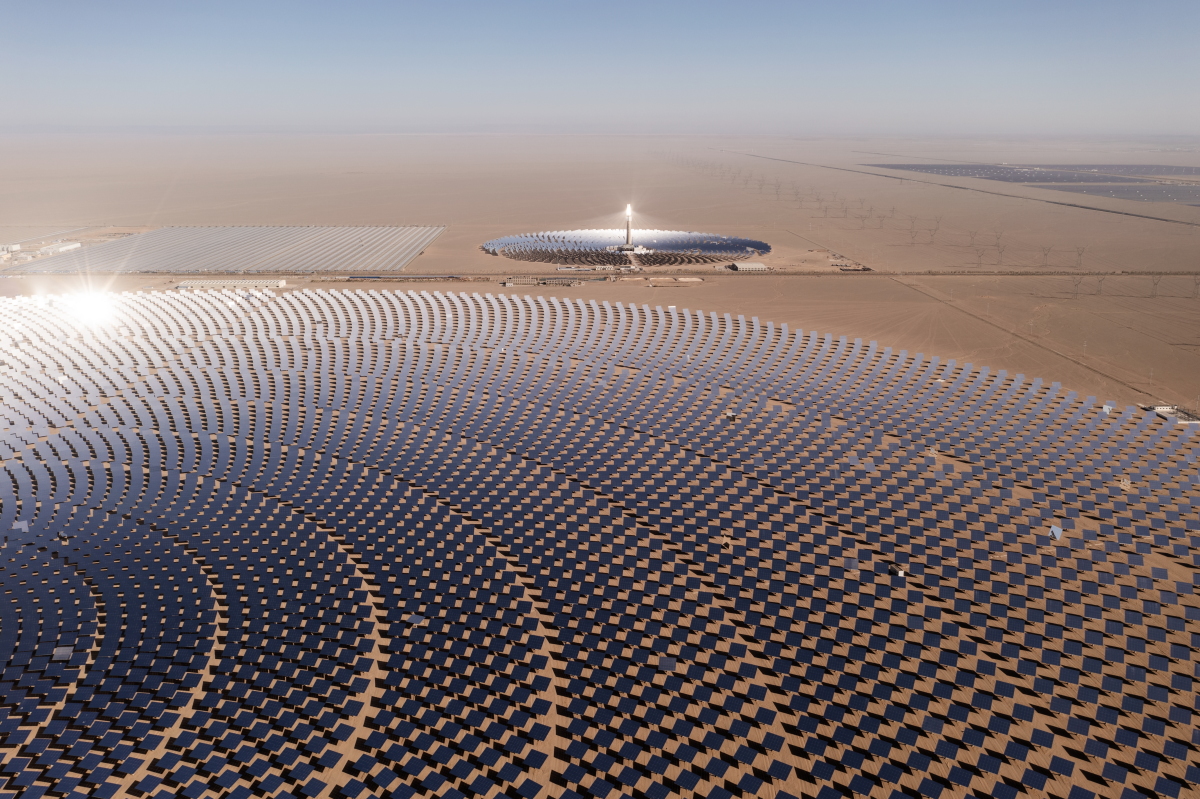Renewable energy investments across the world touched a record $266 bn during the first half of 2022, a report from research firm BloombergNEF (BNEF) found. And China alone made up 43% of this.
According to BNEF’s Renewable Energy Investment Tracker 2H 2022, the uptick in investment reflects an acceleration in demand for clean energy supplies to tackle the ongoing global energy and climate crises. “Despite the headwinds presented by ongoing cost inflation and supply chain challenges, demand for clean energy sources has never been higher,” Albert Cheung, head of analysis at BNEF, noted.
Despite challenges like rising material costs, the report noted that wind and solar project financing was up. The cumulative financing for solar projects was $120 bn in the first half, while the financing for wind projects was $84 bn during this period. In other words, the year-on-year growth of solar energy and wind energy was 33% and 16%, respectively.
In line with global spending, China’s renewable energy investments also saw significant growth. The country spent $41 bn on large-scale solar projects in the first six months of 2022, up 173% from the previous year. $58 bn went into new wind projects, marking a 107% increase year-on-year.
“Green infrastructure is the most important investment area that China is relying on to boost its weak economy in the second half of 2022,” noted Nannan Kou, BNEF’s head of China analysis. “The investment growth trend follows China’s strategy to build new renewable generation capacity so that it can replace its existing coal fleet. China is well on track to hit its 1,200-gigawatt wind and solar capacity target by 2030.”
China’s renewable energy plan
In 2021, China announced a new “1+N” policy framework to achieve its carbon peak and neutrality targets. Furthermore, in June of this year, the 14th five-year plan (FYP) outlined China’s renewable energy roadmap for the five years 2021-2025. The plan on renewable energy is possibly the most fundamental to China’s decarbonisation journey.
China’s climate pledge aims for 1,200 gigawatts (GW) of wind and solar power capacity by 2030, and for 25% of energy consumption to be met by non-fossil fuels by 2030. Achieving these goals is expected to ensure China’s carbon dioxide (CO2) emissions peak before 2030.
The 14th FYP for renewable energy sticks with the previously announced vision of 25% of China’s energy coming from non-fossil sources by 2030. To increase the share from 15.9% in 2020 to 20% by 2025, the plan lays out a framework with a series of targets and actions.
These specifically cover renewable energy production in million tonnes of coal equivalent; renewable electricity generation in terawatt-hours; and renewable energy share in the grid.
China is reaching renewable energy targets fast
Looking at the data released by BNEF, China’s renewable energy projects are taking off fast. Data from the Renewable Energy Agency showed that at the end of 2021, China had already reached half of its 1,200 GW target with the installation of 635 GW of wind and solar capacity.
Furthermore, the Global Wind Energy Council’s 2022 report indicates that China recently surpassed the UK and Germany in offshore wind, becoming the largest offshore wind market in the world, accounting for 40% of the global total installed capacity.
According to the 14th FYP for renewable energy, China is committed to building offshore power bases in five regions. Six coastal provinces’ energy development plans suggest a total of 32GW offshore wind capacity growth during 2021-2025, which would represent an increase of more than 60% on the 2020 level.
China has also plans to set up gigantic solar and wind power plants in the Gobi Desert and other desert regions, with a total output of 450 GW. Constructions of 97 GW solar capacity in the Gobi Desert have already started.
Chinese energy companies are a rising force in the wind and solar power markets. Strong government support, as well as large-scale renewable energy investments, have helped the Chinese manufacturers to forge ahead of others.
In fact, China is now home to six of the top 10 wind turbine makers in the world, according to BNEF. In addition, eight Chinese solar panel manufacturers are in the top 10 based on solar panel shipment capacity in GW. Japan’s Ministry of Trade and Industry has also ranked China No. 1 in intellectual property (IP) competitiveness in offshore wind power and next-generation solar technology.
Renewable energy supply chain supremacy worrisome
Meanwhile, some observers are of the view that China’s dominance in renewable energy is a cause for concern for the remaining world, as it could pose threats to several parts of the supply chain.
Aside from renewable energy investments, China also enjoys supremacy in the processing of essential minerals, such as copper, needed in wind energy turbines. A report by Global Wind Energy Council released in April says that the country enjoys 40% of the global market share of copper, rare earth (87%) as well as nickel (35%).
The report says that the wind power supply chain is worryingly concentrated only in a few geographies may make supplies and trade vulnerable owing to geopolitical tensions or result in a small number of regulatory authorities having enormous influence over supply chain practices and legal contexts.


 Australia
Australia China
China India
India Indonesia
Indonesia Japan
Japan Malaysia
Malaysia Philippines
Philippines Singapore
Singapore South Korea
South Korea Taiwan
Taiwan Thailand
Thailand Vietnam
Vietnam







